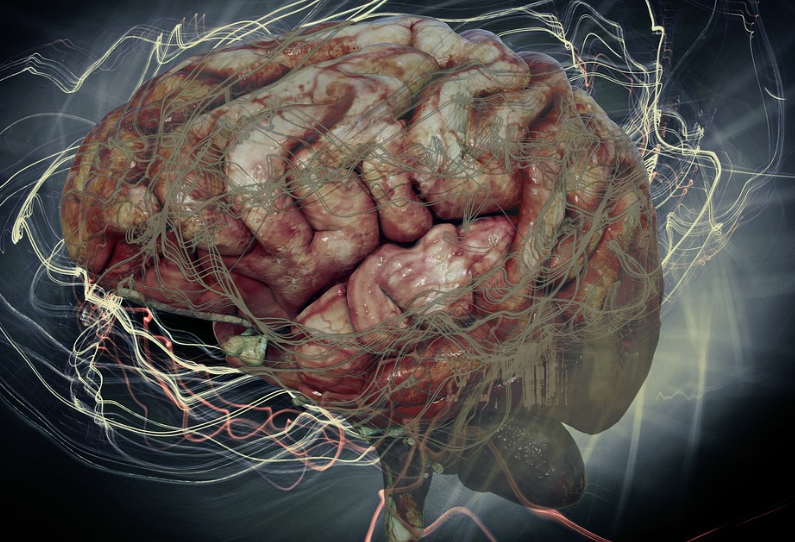Why Visualization is Powerful?
Learn why visualization is powerful and how visualization can help you achieve your goals.

Selfpause Affirmation App
Download the app to get 1,000’s of affirmation meditations and everything you need to write, record and listen to your own.
Visualization helps us understand the relationships between different categories. It can help us improve our intelligence, reduce stress, and increase our chances of success. It also helps us improve our performance. This article will show you how visualization works. Using this technique can help you achieve your goals and change your life. By following these simple steps, you can use visualization to achieve your goals!
Increases intelligence

You may think visualization is all woo-woo, but new research shows that it does have an effect on your intelligence. When you visualize doing something, you activate the same areas of the brain that control the physical action. This increases the connections between the brain and the body. For example, when you visualize running, you activate the part of the brain that controls planning and motor control. In turn, this increases your memory and ability to perform the action.
It’s also helpful for studying and preparing for presentations. Visualization activates the frontal cortex, which helps you make decisions and solve problems. This means you’ll have an easier time-solving problems. So, if you want to increase your intelligence naturally, try practicing visualization! But be sure to do this regularly!
Visualization also helps professionals outside finance better understand what’s going on with the enterprise’s finances. Finance reports can be difficult to read and understand, but visualization makes financial information more digestible. By making complicated information more understandable, finance professionals can focus on identifying and avoiding risks and maximizing gains. Advanced data visualization can even help finance teams meet their 2020 priorities.
Reduces stress

Visualization is a great way to reduce stress and feel more relaxed. To begin, sit in a comfortable position and find a quiet place to practice this technique. Imagine yourself in the situation you’re experiencing as if it were a blank canvas. Fill in the blanks with details of the situation and your surroundings. You may even want to picture tangible objects and your environment.
Studies have shown that visualization reduces stress in people from all walks of life. It also boosts self-esteem, athletic performance, and cognitive performance. In addition, it improves relationships and self-esteem. By painting positive mental pictures, you can increase your confidence and improve your mood. Advocates suggest that you use all five senses when practicing visualization to get the most out of the experience.
Visualization techniques are sometimes called guided imagery, and they involve systematically creating a mental image of a peaceful environment. These techniques can be practiced alone or in conjunction with physical relaxation techniques. Both techniques aim to associate the physical sensations of relaxation with the peaceful visual image. For best results, practice these techniques daily.
Visualization exercises are widely used in the treatment of mental and physical illnesses. In fact, studies have shown that these techniques are extremely effective at helping people manage stress, anxiety, and even depression. A 1995 study of sixty subjects showed that participants experienced significant reductions in stress, anxiety, and depression symptoms. This is a great way to relieve stress and increase confidence and motivation.
When you are experiencing career stress, visualization can help you cope with your situation. Try to develop a mental picture of your desired success. Creating a detailed vision helps your mind to create more neural connections and overcome anxiety.
Improves performance

Visualization is a very effective technique to improve performance. It improves concentration, motivation, and coordination, and reduces stress and anxiety. It is particularly useful for sportsmen, as it helps them mentally practice intimidating maneuvers before trying them in real life. Visualization can also help people with phobias to overcome them. The technique has two types: outcome visualization, where a person visualizes himself or herself achieving a particular goal, and process visualization, in which a person mentally rehearses what steps they must take to accomplish the goal.
Visualization is particularly effective when practiced in short bursts over time, as opposed to being crammed into longer sessions. This spacing effect is also true for other kinds of practice. In addition to visualizing yourself performing a certain task, practicing a new activity often yields better results than practicing it with the same intensity.
Increases chances of success

Visualization is a technique that can increase your chances of success in a variety of areas. It can be used as a means of preparation for an event or as a way to predict the desired outcome. The key to visualization is that it is detailed, which makes it feel more real and will increase your ability to affirm what you want.
A survey of more than one hundred individuals and 500 business owners conducted by TD Bank found that 80% of people who visualized their goals were more confident than those who didn’t. Visualization increased people’s confidence, which helped them achieve their goals more effectively. According to the survey, people who visualized their goals were twice as likely to accomplish them than those who didn’t.
The concept of visualization is not a new one. In fact, professional athletes and other successful people use it to increase their chances of success. It’s a mental skill and requires you to make an image of yourself performing a skill or achieving success. In fact, the author of the article, “See it, Believe It: The Power of Visualization”, mentions some famous people who used it to increase their chances of success: Oprah Winfrey, Jim Carrey, and Olympic athletes.
Visualization is a natural human behavior that can be effective in improving performance in any area of life. The process of visualizing helps people clarify their goals and get more of the right things done in their lives. It can also increase your competitive edge by teaching you habits and methods that will help you reach your goals.
Creates new neurons in the brain

Throughout our lives, we experience a variety of stimuli that activate our brains and create new neurons. Some of these experiences help us to learn and remember new things. Visualization, for example, can improve our memory. New neurons are born in the brain and mature in the process of learning. When the neurons are mature, they will help us to process new information more efficiently.
Neurogenesis has many implications. The production of new neurons varies depending on species, strain, and sex. Among these factors, age is the most important: the number of neurons produced drops in half between puberty and adulthood. But this does not necessarily mean that new neurons will not be produced.
Another study found that guided imagery helped reduce symptoms of PTSD and raised activity in areas of the brain that control our behavior. Visualization has also been found to help athletes overcome the common sports injury known as choking. According to Sian Beilock, a University of Chicago researcher, “Using visualization in sports has positive benefits for performance.”
The Stanford researchers say that this new method of peering into the brain and monitoring the neurons there for months can help researchers better understand normal and diseased states of brain function. Recent advances in micro-optics have made it possible to see deep brain cells, but previous techniques could only capture momentary changes in the brain. This new development is described in a recent article in Nature Medicine.
Our Top FAQ's
Visualization is a powerful tool for understanding data and information because it allows us to see patterns, trends, and relationships that may not be immediately apparent when looking at raw data. By creating graphical representations of data, such as charts, plots, and maps, we can more easily compare and contrast different pieces of information, identify trends and patterns, and gain insights that would be difficult to discern from looking at raw data alone.
Some common pitfalls to avoid when creating visualizations include:
- Overcomplicating the visualization: Keep it simple and avoid using too many different elements or visual encodings.
- Using unclear or misleading visual encodings: Make sure to use accurate and clear visual encodings, such as using the appropriate axis scales and labeling data correctly.
- Omitting important information: Make sure to include all relevant information and context, such as data sources and time periods.
- Using inappropriate visualizations: Choose the right type of visualization for the data and message you want to convey. For example, don’t use a pie chart to show changes over time.
Visualizations can be very effective in presentations and decision-making when they are clear, accurate, and relevant. They can help to convey complex ideas and information in a more concise and easy-to-understand way, and can be used to support arguments or hypotheses. When using visualizations in presentations and decision-making, it’s important to choose the right type of visualization for the data and message you want to convey, and to clearly label and explain the visualization.
Some best practices for designing clear and effective visualizations include:
- Keep it simple: Use only the necessary elements and avoid cluttering the visualization with too much information.
- Use clear and accurate visual encodings: Choose the appropriate visual encodings for the data, such as using the right type of chart or graph, and label data correctly.
- Use appropriate scales and axes: Make sure the scales and axes are appropriate for the data and are clearly labeled.
- Use appropriate titles and captions: Clearly label the visualization and provide any necessary context or explanation.
- Use good design principles: Use design principles such as balance, alignment, and contrast to create visually appealing and effective visualizations.
The use of visualization has evolved significantly over time. Early visualizations, such as maps and charts, were created by hand and were often used to illustrate scientific and mathematical concepts. With the advent of computers, visualization became more widespread and sophisticated, with the development of new tools and techniques for creating and analyzing visualizations. In the digital age, visualization has become even more powerful and widespread, with the proliferation of data and the availability of tools for creating and sharing visualizations online. Visualization is now used in a wide range of fields, including science, business, journalism, and education, and is an important tool for understanding and communicating complex information.
